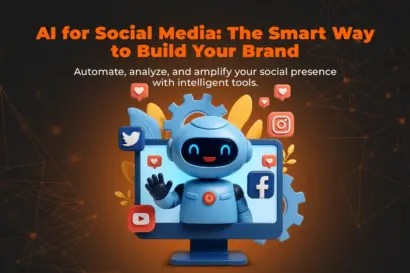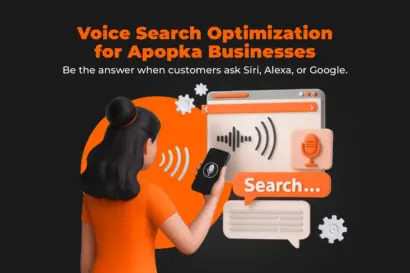Key Questions This Blog Will Answer
- Why is my website not converting visitors into leads or sales?
- How does page speed impact my website’s performance and bounce rate?
- What navigation mistakes hurt website conversions most?
- Why is a strong call-to-action (CTA) critical for local businesses in Orlando?
- What design flaws are driving visitors away from my website?
- How does mobile optimization influence conversions in 2025?
- What is a good conversion rate for local service websites?
- Which UX fixes can boost my website’s performance quickly?
- How does UX tie into local SEO and map pack rankings?
- What real-world results can I expect from improving UX on my site
Is Your Website Killing Conversions? Common UX mistakes that kill conversions
Orlando business owners, listen up.
If you’re investing in digital marketing but your website isn’t converting, the issue might not be your traffic—it could be your user experience (UX). In a market like Orlando, where people browse on mobile, compare options quickly and move fast, every second of friction costs you real business.
Here are the top 5 UX mistakes local brands still make—and how to fix them before your next visitor hits the “back” button :
1. Slow Load Times Are Crippling Conversions
Page speed isn’t just a tech issue—it’s a trust issue. If your pages take too long to load, users will leave—and that means lost conversions.
The facts
- One analysis found that if page load time goes from 1 to 10 seconds, the probability of bounce increases by 123%.
- Another case: pages loading in 2.4 seconds had a 1.9 % conversion rate vs pages loading in 3.3 seconds at 0.9 %.
- A UX statistics roundup shows websites with good UX can have conversion rates up to 400% higher than those with bad UX.
Source:
Why it matters in Orlando
With a mobile‑first audience—tourists checking on the go, local residents browsing between errands—your site must load seamlessly. If it doesn’t, you lose their attention and their business. A slow mobile site undermines credibility.
Fix it fast
- Use tools like Google PageSpeed Insights to measure your mobile & desktop full load times.
- Compress images, implement browser caching and reduce server response time.
- Use a Content‑Delivery Network (CDN) so users in Orlando and beyond get fast responses.
- Track metrics like First Contentful Paint (FCP) and Time to Interactive (TTI) — these correlate with bounce and conversion.
Learn more:
2. Confusing Navigation Kills Exploration
Even if your site loads fast, if users can’t find the service they came for, you lose them.
The facts
- The average website conversion rate across industries is ~2.35 %.
- The top 10% of websites convert at 5–11 %+ when their UX and navigation are optimized.
- 94% of users’ first impressions are design‑related (navigation being part of that)
Source:
Why this matters locally
In Orlando’s service economy (home services, tourism, hospitality), users often arrive with one goal: find your service and contact you. If your menu has 10+ items, services are buried, or the “Book Now” button is hidden, you create friction—and your competitor gets tapped instead.
How to fix it
- Simplify: limit your top navigation to 3–5 primary items: e.g., Services, About, Book/Contact.
- Use clear service category names—avoid jargon.
- On mobile, ensure the menu collapses cleanly and “Book Now” remains prominent.
- Use internal linking from service pages so users don’t get lost.
Learn more:
3. No Clear Call‑to‑Action (CTA) = No Direction
Your website isn’t just digital decor—it should guide visitors to take action. Without a strong CTA, you might look good—but fail to convert.
The facts
- Mobile visitors convert at ~2.9 % vs desktop at ~4.8 %—one of the main causes is poor CTA visibility or mobile confusion.
- A comprehensive UX study points out that 83 % of consumers believe a seamless user experience is essential across devices.
Source:
Why this matters in Orlando
Your target user in Orlando might be browsing on mobile while waiting in line, on a lunch break, or comparing service providers side‑by‑side. If they don’t immediately see what to do next—call, book, click—they move to someone who does.
How to fix it
- Place one prominent CTA above the fold: big, high‑contrast button like “Book Your Free Estimate – Orlando”.
- Repeat the CTA mid‑page and in the footer.
- Use action‑oriented copy: “Schedule Your Visit”, “Claim 10 % Off Today”, “Start Your Project”.
- Make sure the button is large enough for thumb‑taps on mobile.
- A/B test CTA colour, text, placement (especially for Orlando’s service industry context).
Learn more:
- What Is a Landing Page?
- What Is Conversion Rate Optimization (CRO)?
- What Is a Sales Funnel in Ecommerce?
4. Cluttered Layouts Overwhelm Local Buyers
Your site may look fancy, but if it’s cluttered—too many banners, autoplay videos, six fonts mixing—your user will get lost. Clean design wins.
The facts
- Websites with good user experience can have conversion rates up to 400% higher than those with bad UX.
- 88% of users are less likely to return after a bad user experience.
- 94% of first impressions are design‑related.
Why this matters in Orlando
In many Orlando businesses, decision‑makers (homeowners, customers) are time‑pressed and distracted. They don’t want to decode your site—they want clarity. A design that overwhelms them is a lost lead.
How to fix it
- Use a consistent typography system: 1 heading font + 1 body font + one accent.
- Stick to a palette: 2 primary brand colours + 1 accent.
- Use whitespace generously to separate sections and highlight key actions.
- Avoid autoplay videos, heavy animated backgrounds, or large hero images on mobile because they slow load and distract.
- Use visual hierarchy: largest elements = what you want them to do; secondary = supporting info.
- Audit your site for accessibility (contrast, readable fonts, alt text).
Learn more:
5. Not Mobile‑Optimized? Say Goodbye to 70%+ of Visitors
If your site isn’t designed for mobile first, you’re missing the biggest share of traffic and conversions.
The facts
- Mobile devices now make up ~68% of web traffic in many markets; desktop much less.
- 53% of mobile website visitors will leave if the page takes longer than 3 seconds to load.
- A well‑designed mobile site is 5x less likely to have task abandonment than a non‑optimized site.
Why this is critical in Orlando
From tourists browsing on the go to locals searching for services from their phones between appointments—mobile is king. If your mobile UX is poor, you lose high‑intent users at the moment they’re ready to act.
How to fix it
- Use responsive web design (site adapts to screen widths) rather than a desktop‑only layout.
- On mobile, make clickable phone numbers and forms thumb‑friendly.
- Ensure menus don’t hide key actions behind nested dropdowns.
- Test on actual phones (iOS and Android) under real network conditions.
- Prioritize mobile page weight: smaller images, fewer scripts, minimal render‑blocking.
Source:
Learn more:
BONUS: Real Case Study – Before & After UX Fixes
Client Context: Orlando‑based landscaping services company
- Problem: Mobile load time ~7 seconds, no sticky CTA, cluttered homepage with banners
- UX Fixes: Mobile load time reduced to 2.3 seconds, sticky “Free Quote” CTA added, homepage visuals simplified
- Results:
- Bounce rate dropped by 28%
- Mobile conversion rate jumped 41%
- Average session duration increased 22%
- More phone calls and form submissions within 30 days
Conclusion: Turning UX Friction into Conversions
Your website is the digital front door of your Orlando business — and every click, scroll, and delay matters. If you’ve been investing in marketing but not seeing results, the problem isn’t always your traffic — it’s often the user experience (UX) standing between a visitor and a conversion.
Here’s the reality:
A faster, more intuitive, mobile-optimized site doesn’t just look better — it sells better. Fixing load time alone can double your conversions; clarifying your navigation can keep users exploring longer; improving your CTAs can turn idle browsers into real leads.
For Orlando’s service-based businesses, where competition is just a tap away, UX isn’t a luxury — it’s the deciding factor in whether a user calls you or your competitor.
Explore our Orlando service area or book a strategy call to stay ahead.
Explore Related Services
- Local SEO Optimization Orlando
- Web Development Orlando
- Shopify Website Development Orlando
- Logo and Branding Orlando
- Social Media Advertising Orlando
- AdManager Facebook Orlando
- Search Engine Positioning SEO Orlando
Frequently Asked Questions
1. What is UX in web design for Orlando websites?
UX, or user experience, in web design refers to how intuitive, enjoyable, and efficient it is for visitors to interact with your website. For Orlando businesses, strong UX ensures that users can easily find key information—such as hours, services, or booking options—whether they’re locals or tourists. A great UX helps turn site visitors into paying customers by removing friction in the browsing and decision-making process.
2. How does site speed affect conversions for Orlando businesses?
Site speed plays a critical role in conversion rates across all industries. Research shows that even a 1-second delay in load time can drop conversions by 7%. For Orlando businesses competing in busy sectors like hospitality, wellness, or tourism, fast websites provide a smoother user experience, reduce bounce rates, and lead to more bookings or purchases from mobile users on the go.
3. What is a call-to-action (CTA) and how should Orlando businesses use it?
A CTA is a specific element like a button or link that prompts users to take an action—such as “Book Now,” “Call for a Quote,” or “Schedule an Appointment.” For Orlando-based businesses, CTAs should be prominently displayed, mobile-optimized, and tied to local services or events. High-contrast CTAs placed above the fold are particularly effective in driving engagement.
4. Why is mobile optimization important for Orlando websites?
With over 70% of web traffic coming from mobile devices, mobile optimization is essential. In Orlando, where users often search for restaurants, services, and attractions while on the move, having a mobile-friendly site means faster load times, better rankings, and higher conversion rates. A non-optimized site will lose users before they even explore your offerings.
5. How can Orlando businesses check if their site is mobile-friendly?
You can test your website using Google’s Mobile-Friendly Test. This tool helps Orlando businesses identify layout, usability, and speed issues. It’s a quick and valuable way to ensure your site delivers a seamless mobile experience—especially important for service providers and local retailers aiming to convert mobile-first customers.
6. What is visual hierarchy in web design for Orlando brands?
Visual hierarchy refers to the arrangement of elements on a webpage to guide user attention. For Orlando businesses, this means placing the most important content—such as your unique value proposition, phone number, or lead form—at the top or in areas with high visual weight. Using color, typography, and spacing strategically ensures users engage with key elements.
7. Why is web accessibility important for Orlando companies?
Web accessibility ensures that people with disabilities can navigate and interact with your site. For Orlando companies, it not only broadens your reach to all potential customers but also improves SEO performance. Accessible websites benefit from better usability, which leads to higher dwell time, lower bounce rates, and greater trust.
8. What is responsive web design and why does it matter for Orlando?
Responsive web design means your website adapts to different screen sizes and devices. For Orlando businesses, where users may browse from phones, tablets, or laptops while traveling or commuting, this flexibility ensures every visitor has a smooth experience. It also improves your rankings in search engines that prioritize mobile usability.
9. How many CTAs should an Orlando web page include?
For best results, include one strong primary CTA above the fold and repeat it sparingly throughout the page. Orlando service providers, for example, can use “Get a Free Estimate” or “Book Your Session” strategically across their homepage and service pages to guide visitors toward action without overwhelming them.
10. What’s the easiest UX improvement Orlando businesses can make today?
Start by adding a bold, high-contrast CTA button to your homepage and ensure your mobile version loads in under 3 seconds. For many Orlando businesses, this simple change can immediately reduce bounce rates and increase leads from mobile users searching for quick solutions.




